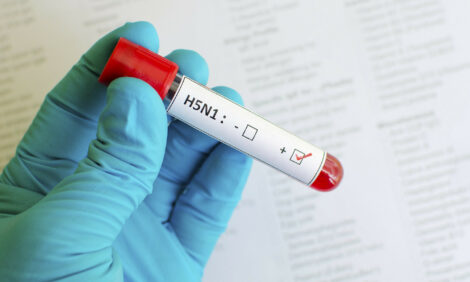



Biosecurity and Vaccination for Control of Avian Influenza
INDIA - Feeding 9 billion human beings by 2050 and the role of chicken and eggs in filling the gap of protein are being actively discussed, writes Dr.T.Kotaiah from Indbro.With a shorter life cycle and improving feed efficiencies, poultry is the species of choice and the cost of protein is going to be much lower compared to other species.
Poultry production all over the world is on expansion path.
Many countries are working at increasing the production of the inputs such as grains, oil cakes and effective alternatives.
Avian Influenza is becoming a serious limitation because of the loss of huge stocks together with the trade barriers. In both ways the prices are likely to go up instead of down.
The number of outbreaks of Avian Influenza all over the world as notified to OIE, are increasing and the losses to producers are alarming, because even the healthy birds around the affected farm are also being killed. Fortunately, the number of human deaths has not being rising at an alarming rate.
OIE has directed the poultry world to control Avian Influenza through biosecurity measures without opting for vaccination, considering the mutation capability of the virus and the possibility of spreading to humans. Inactivated vaccines prepared from the locally emerging strains and homologous low pathogenic strains have been tried in some places.
The main ways of transmission for Avian Influenza were found to be through free moving wild birds from continent to continent and the movement of these birds cannot be controlled. The discussions on the recent outbreaks of the disease suggest that there are inadequacies in the biosecurity protocols, leading to the transmission through men and material from farm to farm.
Biosecurity as a prevention tool for the entry of the disease has long been practiced and awareness of the disease in growing.
Biosecurity levels are much higher today compared to a decade ago, but there is no absolute definition for fool-proof biosecurity.
Commercial broiler units have a very short cycle of 35-45 days. They are cleaned, disinfected and rested after each crop.
Many of the broiler breeder farms are also moving to “All in All Out” production with vacation after each batch.
The outbreaks of Avian Influenza are less in these units.
Egg laying flocks with longer laying cycles are in multi age housing and seem to be more vulnerable for the infection.
New farms following defined biosecurity norms are also getting the disease.
The virus load on the earth is increasing with new outbreaks.
We are getting in to the next phase of “re housing” the birds in the affected production units.
The safety of the replacement flocks in an affected farm is at a greater risk compared to an unaffected farm.
When a production unit that is also a larger size is affected, the shredding of virus is much higher by the time the problem is diagnosed and the action taken. The cleaning, disinfection and biosecurity norms should be much higher.
Vaccination through inactivated vaccines is a good tool to control the disease.
There are limitations in the use of vaccine, which are being studied at a higher level by decision makers. While more versatile vaccines are being researched, use of ring vaccination around outbreak areas and killed inactivated vaccines prepared from the strains for the replacement flocks will be an additional useful tool to limit the shedding of the virus.
Leaving some birds unvaccinated and a differentiation of the vaccinated from the infected (DIVA) also will help reduction in shedding.
Eradicating every particle of virus from the face of earth is much greater a task than looking for a needle in the hay stack. A careful vaccination programme can be a very helpful tool.
Dr T.Kotaiah can be contacted at [email protected]








